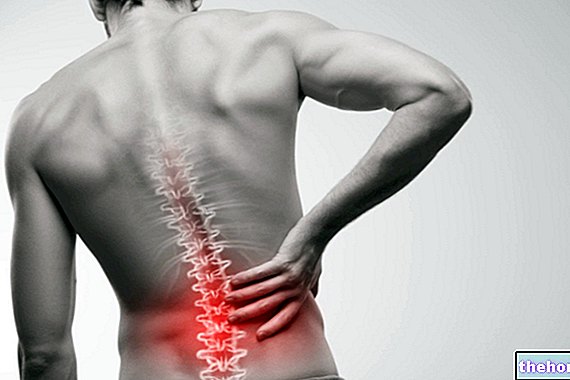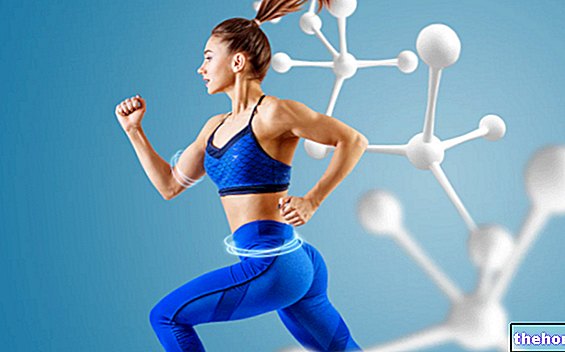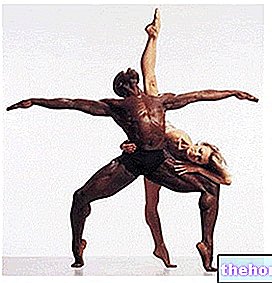While in the case of a viscoelastic change during a manipulation
myofascial, always simplifying, we know that already after some minutes for a "modest area and with a load of few kg of force-weight applied, there is a change in the physical state of the basic substance, or a fluidification of that gel of polysaccharides, water, proteins, hyaluronic acid etc., where collagen and elastic fibers are dispersed.
But not only! Fascial manipulation has an effect on the restoration of proprioception .
To support these considerations by highlighting their precise scientific foundation, I return to the superb research work "Histiological study of deep fascia of the limbs" source of some interesting aspects of the myofascial system of extreme utility to the know-how of a sports-bodyworker to set up his own manipulation techniques.
I report only some aspects of the results of the study, of which I recommend the integral vision. Among the first I would like to report morphometric measurements performed on the deep fascia, that CT layer in close contact with the muscles. The layers in question are those relating to the thigh fascia and the brachial fascia. The layer of fascial tissue is not uniformly distributed, but shows an "appreciable difference in density (thickness) along the tracts examined. The layer relative to the thigh highlights an increase in the deep fascia from the cruro-inguinal area (thinner) which going down towards the knee joint it becomes denser and denser, reaching a thickness of more than twice the initial part. Or as reported by the second sample, relative to the brachial fascia, which denotes a smaller difference in thickness in its anterior part and greater in the posterior one, with an increase in density from the distal to the proximal region. The result of this morphometric measurement of the deep fascia is of great help to the operator in evaluating a priori how to set the pressures of a myofascial manipulative work for normalization of an excessive densification in a muscle compartment due to overuse, overload or high repetitiveness of an athletic gesture.
I think it is extremely useful to know how and where the density of the collagen fibers in the CT in close contact with the muscles varies, both to obtain a better effectiveness from our techniques, and for an evident saving of energy by the operator.
Another very useful aspect for us sports operators, highlighted by the research results, is that which relates to how the deep fascia is structurally organized . Some images are very illustrative and show how the various bundles of collagen fibers cross each other, to obtain a structure that is very resistant to traction and very adaptable to the elongations to which it is subjected, despite the little presence of elastic fibers (less than 1 %), assuming a characteristic wave shape which actually increases its elasticity / flexibility.
A subsequent research study conducted by Carla Stecco, "Model for measuring the parameters of the deep fascia" , further explains how the potential and adaptability of the band is truly exceptional. This elastic and resistant property at the same time seems to be due to the orientation of the collagen fibers between the various adjacent layers of the fascial sheets, with an angle of approximately 78 °. This precise arrangement, explains the author, ensures that the fascial layer has excellent biomechanical properties, since it assumes the ability to be elastic in all directions of stress.
Thanks to this "structural angle, it happens that the traction, compression and shear forces applied to the muscle are also distributed over the deep fascia without offering too much negative resistance despite the small number of elastic fibers present. In addition, this structure allows it scrolling optimal between the various fascial layers / laminae - fascial layers -.
This helps us to explain how different the approach is, setup / execution , between a sports myofascial massage compared to a traditional one. The latter is based on manual de-tensioning, beating and squeezing, which would be useless or ineffective if performed on the fascia. While this requires work done with precise and specific manipulations, aimed at varying its viscoelastic properties, trying to normalize the fibrousness and densifications produced by overloads, tension, trauma, adhesions and scars.
Here I still engage in the exchange of views on the technique passive , had with Robert Schleip, as seen to be another great expert and internationally renowned researcher of the band. As explained in the first part of my technique, one of the prerogatives is to manipulate as much as possible all the muscle and its surroundings, that is what I have learned to be defined as the myofascial expansions.
The dexterity is applied at 360 ° in a wide and enveloping way: above, below, sideways up to muscular peripheries during the phases of muscle dimensional change dictated by contraction, elongation and release, both activated by the athlete himself, and passively when the operator helps him in the movement of muscle-joint excursion. By doing so, it is not only possible to influence the circulation of fluids in the basic substance which, although little is known about it, now more than ever one is certain of the important changes induced by the effect of dynamic hydration caused by manipulation.
myofascial. For example the "increase in the regeneration of GAGs - GlycosAminoGlycans - which being very viscous and extend and also bind to the cell membrane, where thanks to the presence of H2O they are incompressible therefore ideal as well as a support and means that conducts nourishment, also for lubrication allowing the physiological sliding between the various fascial layers of the TC. If after the manipulation treatment we passively do or ask the athlete to do mobilization exercises for the affected area, the effects obtained are more durable, further stimulating the physiological turnover collagen (Brad Hiskins).
Other articles on "Passivactive technique in myofascial detachment Trunk and Upper Limbs: - 4th part -"
- Passivactive technique in myofascial detachment Trunk and Upper Limbs: - 3rd part -
- Passivactive technique in myofascial detachment trunk and upper limbs
- Passivactive technique in myofascial detachment Trunk and Upper Limbs: - 2nd part -
- Passivactive technique in myofascial detachment Trunk and Upper Limbs: - 5th part -
- Passivactive technique in myofascial detachment Trunk and Upper Limbs: - 6th part -
- Passivactive technique in myofascial detachment Trunk and Upper Limbs: - 7th part -
- Passivactive technique in myofascial detachment Trunk and Upper Limbs: - 8th part -
- Passivactive technique in myofascial detachment Trunk and Upper Limbs: - 9th part -
- Passivactive technique in myofascial detachment Trunk and Upper Limbs: - 10th part -
- Passivactive technique in myofascial detachment Trunk and Upper Limbs: - 1st part -




























